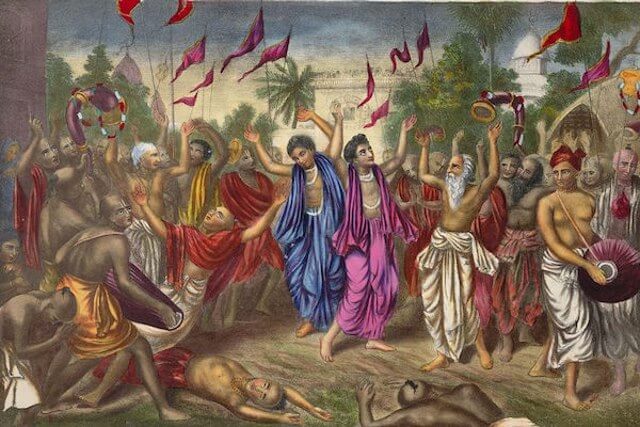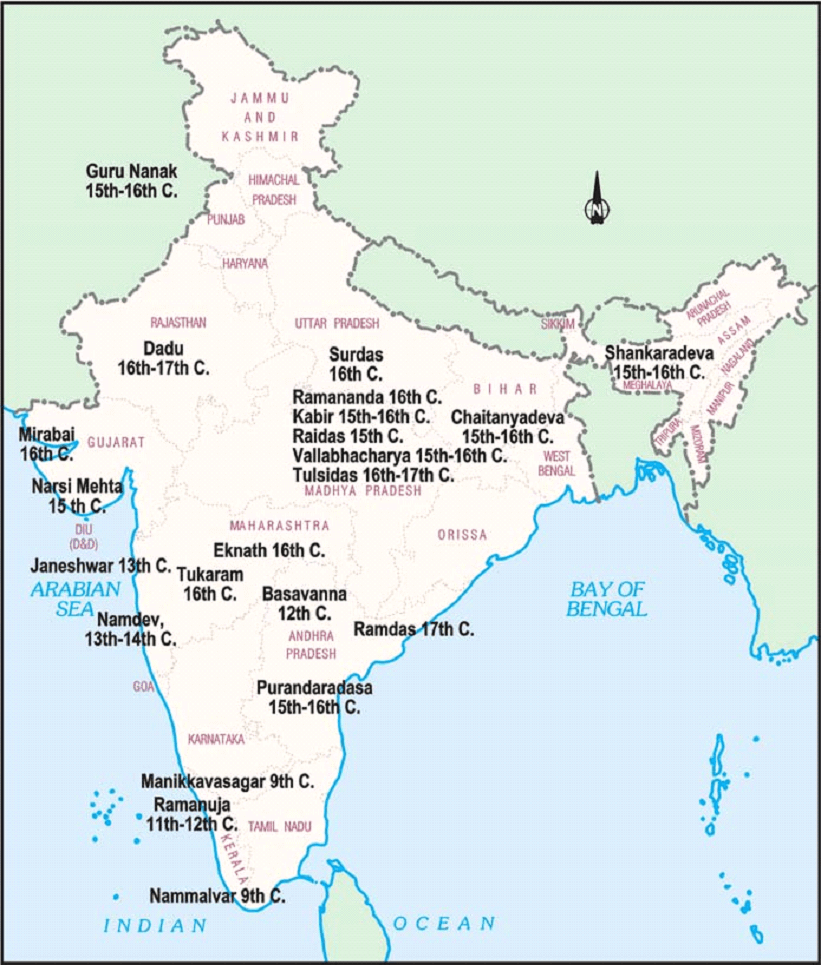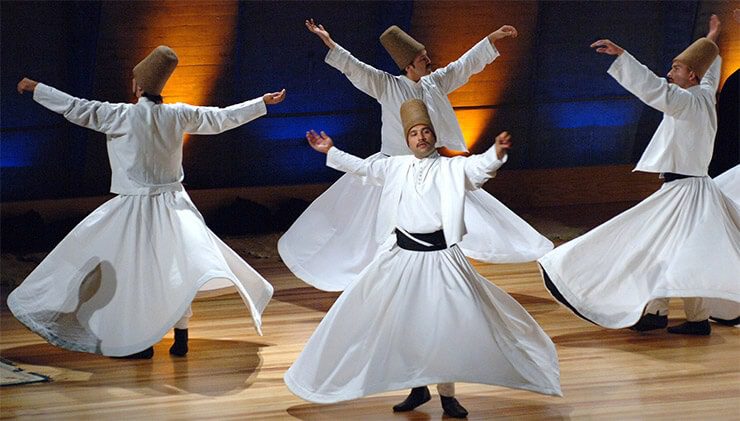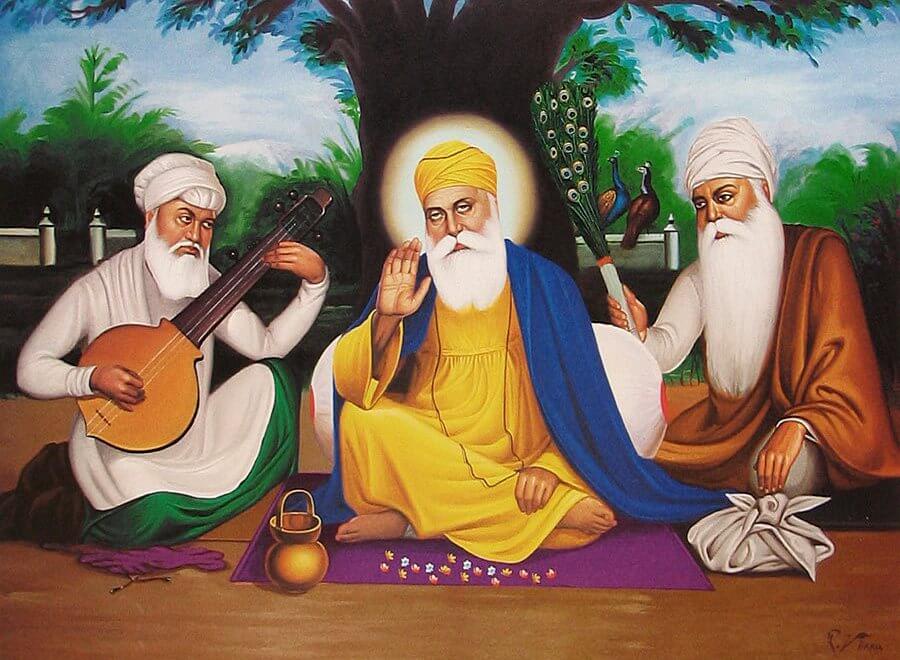Brahminism vs Buddhism/Jainism vs Devotional Paths
(Bhakitsm, Sufism, and Sikhism)
Brahminism based on the caste system was prominent during the Medieval period. But there was opposition to the same as well.
Many people were uneasy with such ideas and turned to the teachings of the Buddha or the Jainas according to which it was possible to overcome social differences and break the cycle of rebirth through
personal effort.
Others felt attracted to the idea of a Supreme God who could deliver humans from such bondage if approached with devotion (or bhakti). This idea, advocated in the Bhagavadgita, grew in popularity in the early centuries of the Common Era.
Intense devotion or love of God is the legacy of various kinds of bhakti and Sufi movements that have evolved since the eighth century. The idea of bhakti became so popular that even Buddhists and Jainas adopted these beliefs.
Bhakti cult
Bhakti was accepted as a means to attain moksha along with jnana and karma. The development of this cult took place in South India when the Nayanars and Alwars moved against the austerities propagated by the Buddhist and Jain schools and professed that ultimate devotion to god was the means to salvation.
People were no longer satisfied with a religion that emphasized only ceremonies. The cult is the combined result of the teachings of various saints, through the then times. Each of them had their own views, but the ultimate basis of the cult was a general awakening against useless religious practices and unnecessary strictness. The cult also emerged as a strong platform against casteism.
Some of the important leaders of the movement are:
- Namadeva and Ramananda (Maharashtra and Allahabad) – Both of them taught the concept of bhakti to all the four varnas and disregarded the ban on people of different castes cooking together and sharing meals.
- Sankara and Ramanuja – The propounders of Advaita (non-duality) and vishishta adwaitha (qualified non-duality) respectively. They believed god to be nirguna parabrahma and satguna parabrahma respectively.
- Vallabhacharya – propounder of shuddha adwaitha or pure non-duality.
- Chaitanya (Bengal) – relied on the use of music, dance and bhajans to get in touch with God. ‘love’ was the watchword of the chaitanya cult.
- Kabir – was a disciple of Ramananda, and was raised by a Muslim weaver. He stood for doing away with all the unnecessary customs and rituals in both religions and bringing union between these religions.
- Guru Nanak.
- Nimbakacharya – founder of the Radha-Krishna cult. He expressed this relation to substantiate the importance of marriage. It was also used as an example of God’s love to the people.
Nayanars and Alvars
- In South India 7th to 9th centuries saw the emergence of new religious movements, led by the Nayanars (saints devoted to Shiva) and Alvars (saints devoted to Vishnu) who came from all castes including those considered “untouchable” like the Pulaiyar and the Panars.
- They were sharply critical of the Buddhists and Jainas.
- They drew upon the ideals of love and heroism as found in the Sangam literature (Tamil literature).
- Between 10th and 12th centuries the Chola and Pandya kings built elaborate temples around many of the shrines visited by the saint-poets, strengthening the links between the bhakti tradition and temple worship.
Philosophy and Bhakti
- Shankara, from Kerala in the 8th century, salvation .was an advocate of Advaita or the doctrine of the oneness of the individual soul and the Supreme God which is the Ultimate Reality.
- He taught that Brahman, the only or Ultimate Reality, was formless and without any attributes.
- He considered the world around us to be an illusion or maya, and preached renunciation of the world and adoption of the path of knowledge to understand the true nature of Brahman salvation.
- Ramanuja, from Tamil Nadu in the 11th century, propounded the doctrine of Vishishtadvaita or qualified oneness in that the soul, even when united with the Supreme God, remained distinct.
- Ramanuja’s doctrine inspired the new strand of bhakti which developed in north India subsequently.
Basavanna’s Virashaivism
- This movement began in Karnataka in the 12th century which argued for the equality of all human beings and against Brahmanical ideas about caste and the treatment of women.
- They were also against all forms of ritual and idol worship.
Saints of Maharashtra
- The most important among them were Janeshwar, Namdev, Eknath and Tukaram as well as women like Sakkubai and the family of Chokhamela, who belonged to the “untouchable” Mahar caste.
- This regional tradition of bhakti focused on the Vitthala (a form of Vishnu) temple in Pandharpur, as well as on the notion of a personal god residing in the hearts of all people.
- These saint-poets rejected all forms of ritualism, outward display of piety and social differences based on birth.
- It is regarded as a humanist idea, as they insisted that bhakti lay in sharing others’ pain.
Nathpanthis, Siddhas, and Yogis
- Criticized the ritual and other aspects of conventional religion and the social order, using simple, logical arguments.
- They advocated renunciation of the world.
- To them, the path to salvation lay in meditation on the formless Ultimate Reality and the realization of oneness with it.
- To achieve this they advocated intense training of the mind and body through practices like yogasanas, breathing exercises and meditation.
- These groups became particularly popular among “low” castes.
Saint Kabir
- Probably lived in the 15th-16th centuries.
- We get to know of his ideas from a vast collection of verses called sakhis and pads said to have been composed by him and sung by wandering bhajan singers.
- Some of these were later collected and preserved in the Guru Granth Sahib, Panch Vani, and Bijak.
- Kabir’s teachings were based on a complete, rejection of the major religious traditions and caste systems. He believed in a formless Supreme God and preached that the only path to salvation was through bhakti or devotion.
- The language of his poetry was simple which could even be understood by ordinary people.
- He sometimes used cryptic language, which was difficult to follow.
- He drew his followers from among both Hindus and Muslims.
Sufi Movement and Islam
The word Sufi means wool. The preachers from Arabia wore wool to protect themselves from dust winds. The Sufi movement is believed to have begun in Persian countries against the highly puritan Islamic culture.
Later, it spread into India and adopted various things like yogic postures, dance and music into it, and turned itself into a pantheistic movement. The Sufi orders were of two types – ba-shara and be-shara, where shara stood for the Islamic law. The former obeyed the laws while the latter was more liberal.
The saints organized themselves into twelve silsilas or orders. The important among them were the Chisti and Suhrawardi silsilas, both of which belonged to the ba-shara order.
The Chisti Silsila was begun by Khwaja Moinuddin Chisti who came to India around 1192. None of his records remain, and he is widely known through the writings of his disciples and followers. The most famous of the Chisti saints were Nizamuddin Auliya and Naziruddin chirag-i-Delhi. They mingled freely with people of low classes, even Hindus. The chistis didn’t want anything to do with the administration or money. They led simple austere lives.
This was just the opposite in the case of the suhrawardi saints who were rich, and often held positions in the government. Bahauddin Zachariah suhrawardi is a famous saint from this silsila.
There were two streams in general – wahdat-ul-wujud (doctrine of the unity of god) and wahdat-ul-shuhud (philosophy of apprenticism). The latter was found only in the nakshbandi silsila, which was a highly puritan Islamic silsila.
THINGS TO NOTE
- Sufis were Muslim mystics and who composed poems.
- They adopted many ideas of each other[religions].
- They rejected outward religiosity and emphasized love and devotion to God and compassion towards all fellow human beings.
- Silsilas, a genealogy of Sufi teachers, each following a slightly different method (tariqa) of instruction and ritual practice.
- Islam propagated strict monotheism or submission to one God. Muslim scholars developed a holy law called Shariat.
- The Sufis often rejected the elaborate rituals and codes of behaviour demanded by Muslim religious scholars.
Baba Guru Nanak (1469-1539) and Sikhism
- Established a centre at Kartarpur named Dera Baba Nanak on the river Ravi.
- The sacred space thus created by Guru Nanak was known as dharmsal. It is now known as Gurdwar.
- Before his death Guru appointed Lehna also known as Guru Angad as his successor.
- Guru Angad compiled the compositions of Guru Nanak, to which he added his own in a new script known as Gurmukhi.
- The three successors of Guru Angad also wrote under the name of “Nanak” and all of their compositions were compiled by Guru Arjan [5th Guru who was executed by Jehangir]in 1604.
- The compilation was added with the writings of other figures like Shaikh Farid, Sant Kabir, Bhagat Namdev and Guru Tegh Bahadur.
- In 1706 this compilation was authenticated by Guru Gobind Singh. It is now known as Guru Granth Sahib.
- Due to Guru Nanak’s insistence that all the followers should adopt productive and useful occupations had received wider support during 16th century and followers increased, henceforth.
- By the beginning of the 17th century, the town of Ramdaspur (Amritsar) had developed around the central Gurdwara called Harmandar Sahib (Golden Temple). It was virtually self-governing and also referred as ‘a state within the state’ community. This fumed Mughal emperor Jahangir which led to the execution of Guru Arjan in 1606.
- The Sikh movement began to get politicized in the 17th century, a development which culminated in the institution of the Khalsa by Guru Gobind Singh in 1699 and this entity is called as Khalsa Panth.
- Guru Nanak’s idea of equality had social and political implications because his idea of liberation was not that of a state of inert bliss but rather the pursuit of active life with a strong sense of social commitment.
Summary
The coming of the Turks to the Indian sub-continent led to a revamp of culture, religion, architecture and almost all fields of life. This was due to the two strongly established religious views that confluence here. The strong Islamic views of the Turks combined with the established Hinduistic culture already prevalent in India. Both Sufism and Bhakti cult were out-of-the-box thoughts on religion. They were mainly against the common religious views, and most importantly, they both were strongly against the caste system.







